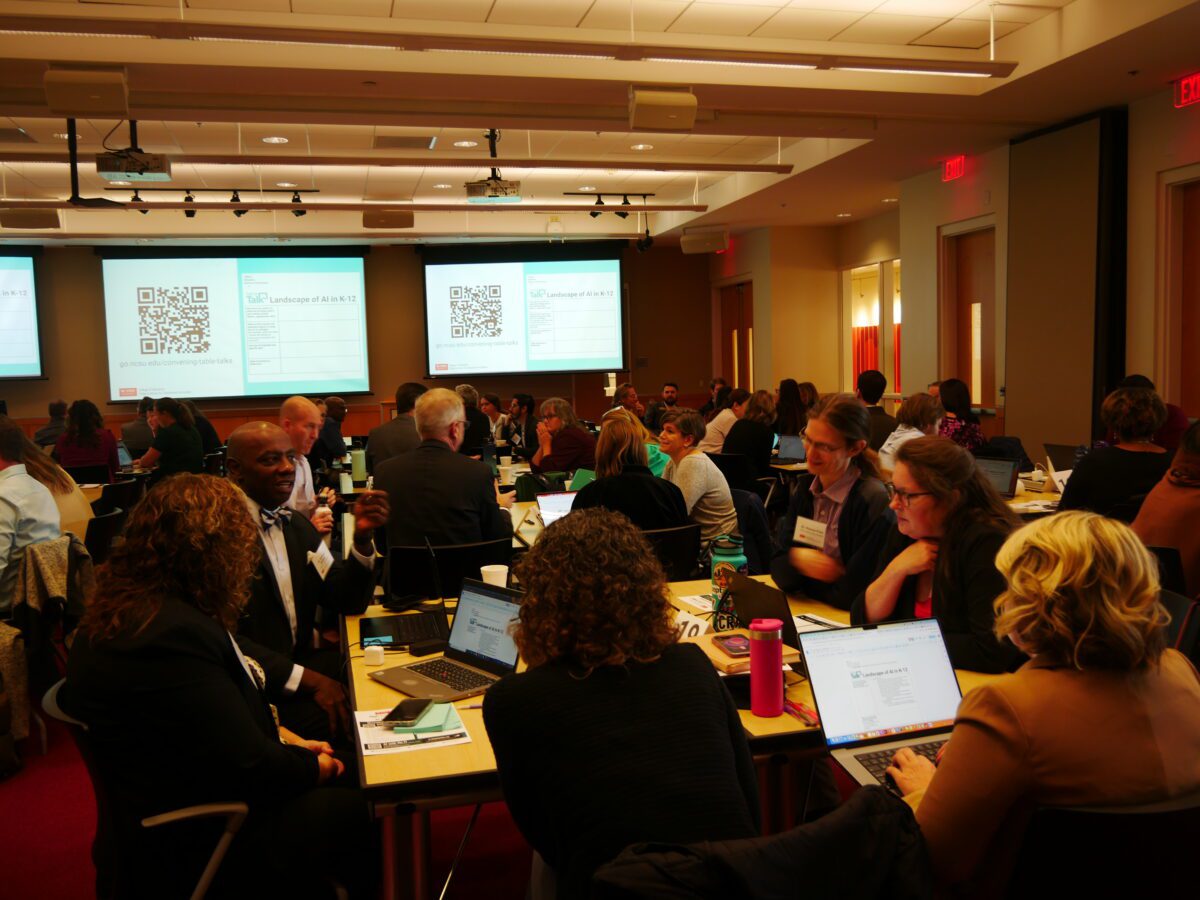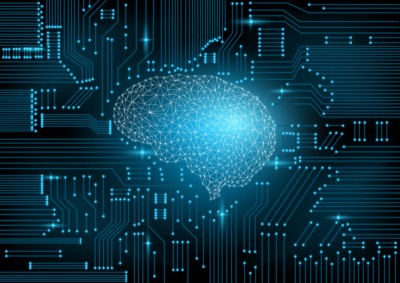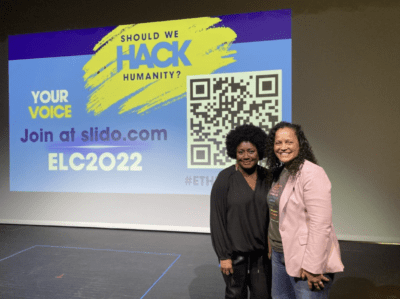
|
|
As artificial intelligence (AI) continues its rapid growth throughout industries and culture, educators and leaders in AI gathered at the Friday Institute for Educational Innovation, part of the College of Education at North Carolina State University, on Nov. 15 for its AI in K-12 Convening to discuss the implementations and potentials of AI in classrooms.
“The things that we are able to do now because of AI is amazing,” said Amanda Moore, district innovation coach for Center Grove Community School. “And if we can help our students and our teachers envision the things that are possible and use those ideas in classrooms now, just imagine what our classrooms could look like.”
AI relates to technology that can learn and perform intelligent tasks such as data analysis, machine learning, problem solving, and more. Generative AI involves content creation such as language, graphics, or audio.
AI adoption has grown quickly in schools and across various industries, especially since the launch of ChatGPT, a popular AI language chatbot, in late 2022. Schools have frequently grappled with finding the best course of action with AI, which presenters at the convening agreed is here to stay.
AI carries the potential of many benefits for educators, said Pati Ruiz, senior learning sciences and emerging technologies researcher at Digital Promise. AI can reduce educators’ workloads and cognitive effort, and it allows educators to create interactive and responsive learning material to meet individual students’ needs, she said.
Students may also see benefits, Ruiz said, with features like assisted learning frameworks and personalized learning, though she added it’s important for teachers to maintain control of the automation their students use, remembering they ultimately know what is best for their students.
“We should integrate AI and there are a lot of opportunities for us there, but again, it’s the educator’s professional judgment that needs to be centered and the student and family voices that also need to be considered when we’re making these decisions,” Ruiz said.
Ruiz said it can be helpful to envision AI like an electric bicycle — the human riding the bike maintains control, but they receive technical support from the machine to lessen the burden.
Educators, students, and their families can benefit from promotion of AI literacy, which will help users engage with AI in a productive and responsible manner, Ruiz said.
AI in action in the classroom
AI in the classroom goes so much further than ChatGPT, with many more possibilities for students to learn and grow and explore future career opportunities as well, Moore said.
Moore helped co-create Primary AI, a game-based curriculum for upper elementary students featuring AI and robotics. The game centers around the task of solving problems related to a decreased population of a penguin species in New Zealand. Moore said using the game, students employ AI to collect and analyze data.
“In that unit, students are not only learning about science, but they’re also learning about how AI works and they’re also building AI models,” Moore said. “So I think what’s really powerful about that is that they’re not just using AI tools, they’re building that AI literacy.”
Moore said lots of advancements in AI are being made in various disciplines, such as utilizing the technology to identify cancer or to identify endangered species. Moore said these strides should excite teachers as they encourage students toward their futures.
“The potential to inspire our students for what they can do — every student should have the ability to imagine their potential and their place in the AI landscape,” Moore said. “They should have that opportunity. And it’s our responsibility to give them that opportunity.”
Ethics as a part of AI literacy
Ruiz discussed the importance of the human using AI maintaining control of what is produced through AI tools, keeping in mind that AI content is synthetic.
“We need to continue valuing the human aspect and the human input that go into the development of this content,” Ruiz said.
Valuing ethics and accessibility remain important parts of developing AI literacy, Ruiz said. Those without access to technology like AI may get left behind. It’s also essential to ensure AI can be accessible to students with disabilities, she said.
Considering biases is important when developing AI literacy for students and educators, as Ruiz said many may view machines as neutral, though the data machines have access to is man-made and may contain biases. It’s important to consider who the technology was made by and why, she said.
“There is bias in the data inherently, and we need to be aware of those biases,” Ruiz said.
Ethics and consideration of who is impacted by technology is also a big player in AI literacy, Ruiz said, as the technology can cause environmental effects from the energy required to run the systems. Human labor is also something for educators and students to consider when using AI as well, Ruiz said, such as those responsible for maintaining data sets.





